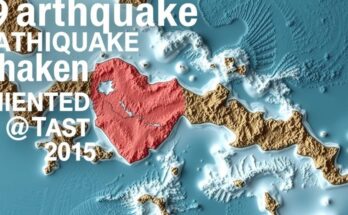The Fatemiyoun and Zainebiyoun, Iranian proxy groups composed of Afghan and Pakistani Shiite fighters, were instrumental in the Syrian civil war but have recently seen mass desertions amid rising anti-Assad rebel forces. As their future is uncertain, experts suggest Iran will continue to rely on these militias despite the challenges faced by its allies in the region.
The Iranian proxy groups known as the Fatemiyoun Brigade and Zainebiyoun Brigade were integral to Iran’s efforts to maintain influence in Syria, particularly during the Syrian civil war. Composed mainly of Afghan and Pakistani Shiite fighters, these militias were critical in retaking territories from forces like the Islamic State (IS) during the conflict’s peak. However, recent shifts in the battlefield have caused significant desertion among these groups as anti-Assad rebels gained momentum, leading to deserted bases that were once heavily fortified. As their future hangs in the balance, experts believe that Iran will not disband these units, given the current regional challenges faced by its other allies, such as Hezbollah.
The formation of the Fatemiyoun and Zainebiyoun Brigades occurred in the early years of the Syrian civil war, largely in response to threats against the Assad regime and Shiite interests posed by Sunni extremist groups like the Islamic State. Iran’s Islamic Revolutionary Guard Corps (IRGC) played a crucial role in recruiting and training fighters, employing various methods, both coercive and incentivized, to bolster these militias. As the Syrian civil war progressed, both groups grew in numbers and significance, leading to their characterization as vital components of Iran’s ‘Axis of Resistance’ in the region.
In summary, while the Fatemiyoun and Zainebiyoun Brigades played significant roles in supporting the Assad regime during the Syrian civil war, their recent abandonment of posts raises questions about their future. As anti-Assad forces continue to challenge established power structures, the fate of these militias remains uncertain. Nevertheless, it is evident that Iran recognizes the continuing need for these forces amidst evolving regional dynamics and is likely to adapt their role accordingly.
Original Source: www.voanews.com



